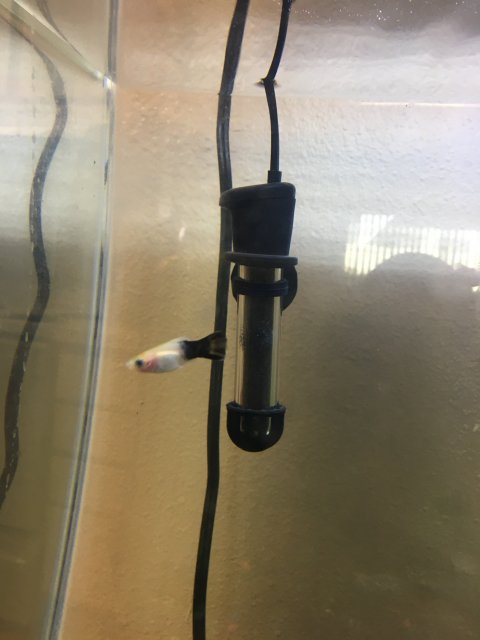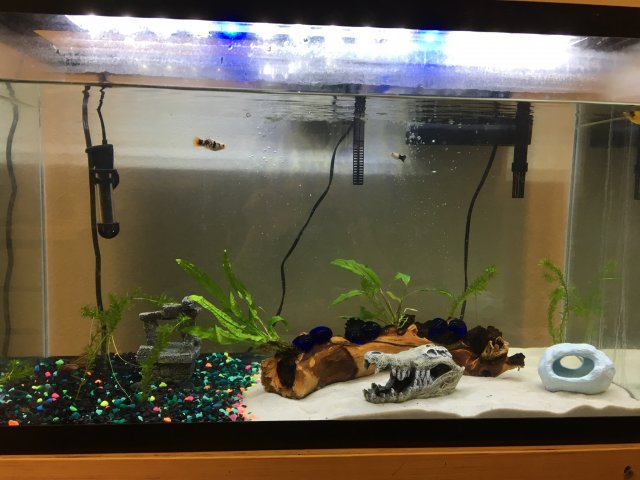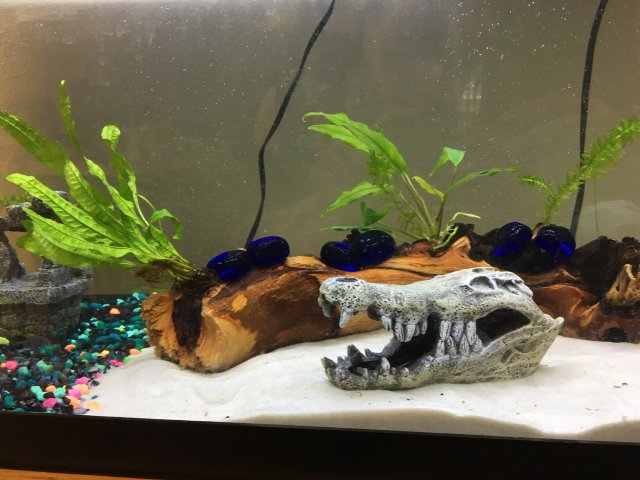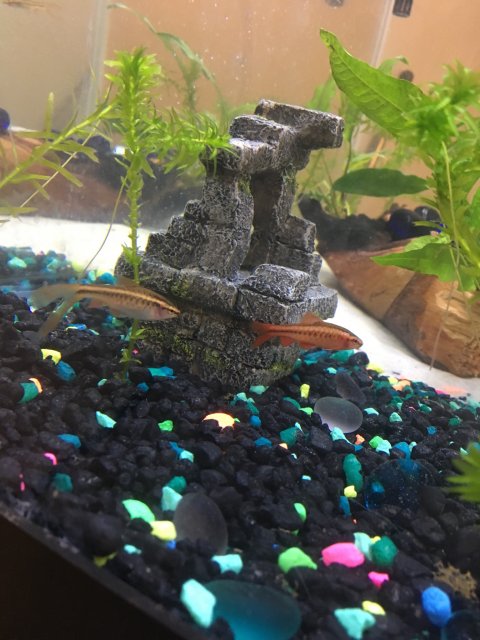So I had my tank cycled, I thought anyway. Dropped ammonia spike nitrites and dropped nitrites and nitrates appeared. So I added fish and did a water change, my ammonia spiked all the way to 1ppm, so of course I did another water change, still 1ppm. I tested my tap water and it has 1ppm of ammonia. Water changes are actually increasing the ammonia in my tank. If I leave the tank alone the ammonia drops each day. And if left alone for 4 days drops to 0 with no nitrite spike but climbing nitrates so I know the bacteria are working to eat the ammonia and I’m not even seeing the nitrite spike. How on earth am I supposed to work with this.
Tapwater has ammonia
- Thread starter Maxsfish
- Start date
You are using an out of date browser. It may not display this or other websites correctly.
You should upgrade or use an alternative browser.
You should upgrade or use an alternative browser.
Your water co. probably uses chloramines to treat the tap water Ammonia will show as up to 1 ppm on an API test. If you use a dechlorinator like Prime, it will keep the ammonia in a safer form for 24-48 hours. Hopefully that should be enough time for your beneficial bacteria to catch up. If ammonia still shows up after 48 hours, you can just dose Prime for the entire tank volume. It means you need to test often until you get a handle on dosing Prime to keep your fish happy. I always dose for a full tank water volume even if I change only 25-50% of tank water. I also have pretty heavily planted tanks. Plants can help a lot, they actually prefer to use ammonia as "fertilizer"...but you need a ton!
Well, I'd call it a good sign, lol. I think you've got a pretty grip on this new tank stuff...but we want pics!
Nice start! Well, your going to need a bunch more plants for eggs to have a chance survive...everybody likes caviar! That's ok for now, breeding can be fun but also a lot of work. Just get used to changing water to keep everything stable. Enjoy your success so far.
Just so you don't get big ideas, clear eggs are infertile. You, & you fish, need more practice, lol.
I'm not sure, but it looks like you have a platy & a guppy? in the top pic. It may be the angle...
Just so you don't get big ideas, clear eggs are infertile. You, & you fish, need more practice, lol.
I'm not sure, but it looks like you have a platy & a guppy? in the top pic. It may be the angle...
For successful spawning, it's easier to move the parents to another tank with marbles/large gravel substrate, or a bed of java moss. Let them spawn in there for 2-3 days, then put them back in the main tank. The fry will hatch out safely. Literally EVERYTHING will eat eggs and many fish will go after the fry, so raising them in a community setup requires dense planting.
No I had 3 platies in there with the cherry barbs, but moved them to a separate tank. It was a bumblebee, painted, and a panda. The panda platy is smaller than the other two but definitely bigger than a guppy. Here’s a close up of the panda. You think I could use more plants? I was thinking about getting more but wasn’t sure what, I’ve had the anubias and java fern before. The anacharis is new to me. I had amazon sword before too. At my lfs there is temple compacta, cardinal, hairgrass, wisteria, white ribbon, and bacopa.


Just an FYI re SeaChem Prime. This is from their FAQ page on Prime:
Most of us use a salicylate based ammonia kit.
Also:
Response of aquatic plants to abiotic factors: A review
Article in Aquatic Sciences · February 2011
Gudrun Bornette: French National Centre for Scientific Research - Sara Puijalon: Claude Bernard University Lyon 1
The bacteria, on the other hand, mostly prefer ammonia.
Both quotes from https://www.seachem.com/prime.phpI am using Prime® to control ammonia but my test kit says it is not doing anything, in fact it looks like it added ammonia! What is going on?
A: A Nessler based kit will not read ammonia properly if you are using Prime®... it will look "off scale", sort of a muddy brown (incidentally a Nessler kit will not work with any other products similar to Prime®). A salicylate based kit can be used, but with caution. Under the conditions of a salicylate kit the ammonia-Prime® complex will be broken down eventually giving a false reading of ammonia (same as with other products like Prime®), so the key with a salicylate kit is to take the reading right away. However, the best solution ;-) is to use our MultiTest™ Ammonia kit; it uses a gas exchange sensor system which is not affected by the presence of Prime® or other similar products. It also has the added advantage that it can detect the more dangerous free ammonia and distinguish it from total ammonia (total ammonia is both free ammonia and non-toxic ionized forms of ammonia).
I tested my tap water after using Prime® and came up with an ammonia reading. Is this because of chloramine? Could you explain how this works in removing chloramine?
A: Prime® works by removing chlorine from the water and then binds with ammonia until it can be consumed by your biological filtration (chloramine minus chlorine = ammonia). The bond is not reversible and ammonia is still available for your bacteria to consume. Prime® will not halt your cycling process.
I am going to assume that you were using a liquid based reagent test kit (Nessler based, silica). Any type of reducing agent or ammonia binder (dechlorinators, etc) will give you a false positive. You can avoid this by using our MultiTest™ Ammonia kit (not affected by reducing agents) or you can wait to test, Prime® dissipates from your system within 24 hours
Most of us use a salicylate based ammonia kit.
Also:
Response of aquatic plants to abiotic factors: A review
Article in Aquatic Sciences · February 2011
Gudrun Bornette: French National Centre for Scientific Research - Sara Puijalon: Claude Bernard University Lyon 1
from https://www.researchgate.net/profil...quatic-plants-to-abiotic-factors-A-review.pdfPhosphorous and nitrogen are both key parameters for aquatic plant life. The ammonium ion is the preferred nitrogen source for plant growth (Smolders et al. 2002; James et al. 2004; Jampeetong and Brix 2009). However, at certain levels, it may become inhibitory to plants (Litav and Lehrer 1978; Clarke and Baldwin 2002; Cao et al. 2007). Even if nitrate assimilation requires more energy than that of ammonium (Miller and Cramer 2005), nitrate may be used as a nitrogen source by aquatic plants, and high nitrate concentrations may lead to the dominance of more competitive free-floating species and instigate low species richness (James et al. 2005; Barker et al. 2008
The bacteria, on the other hand, mostly prefer ammonia.





